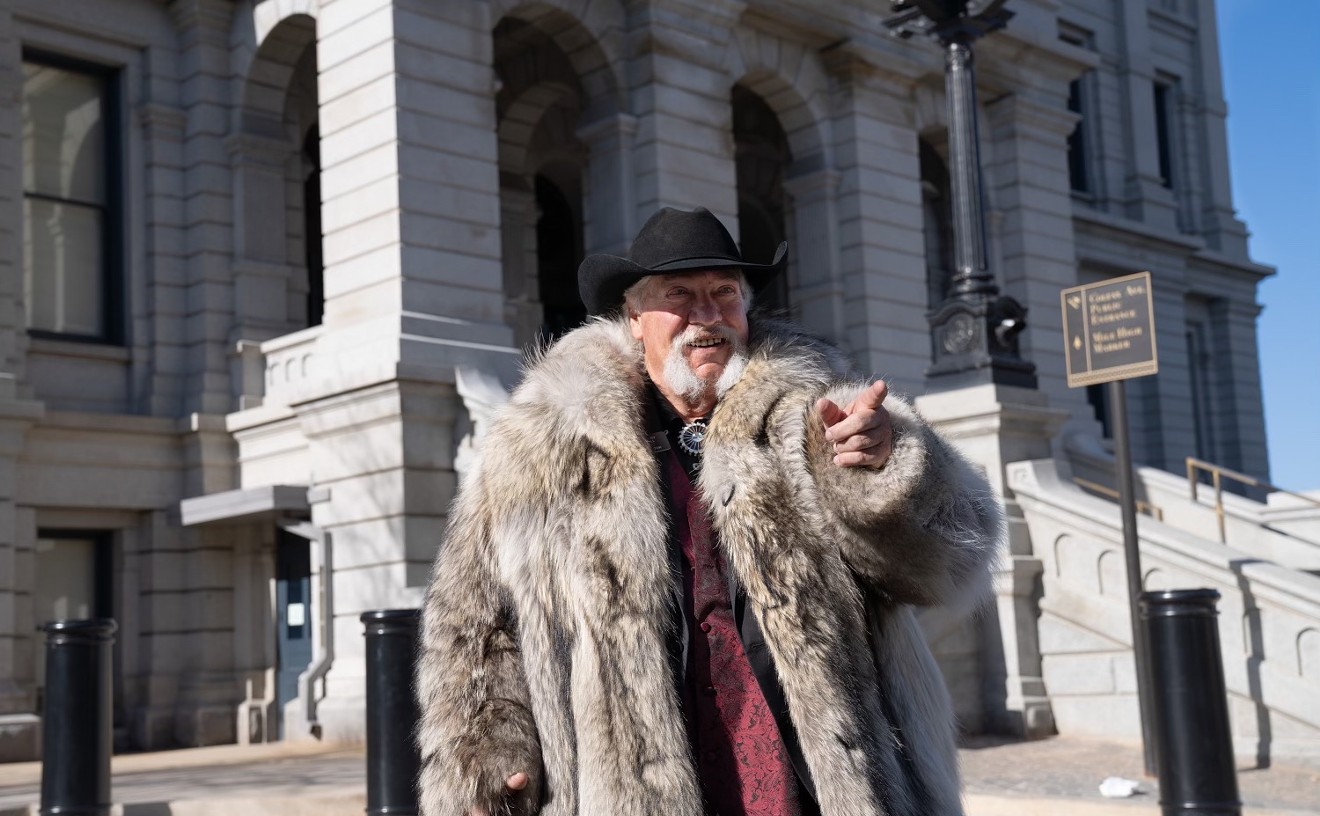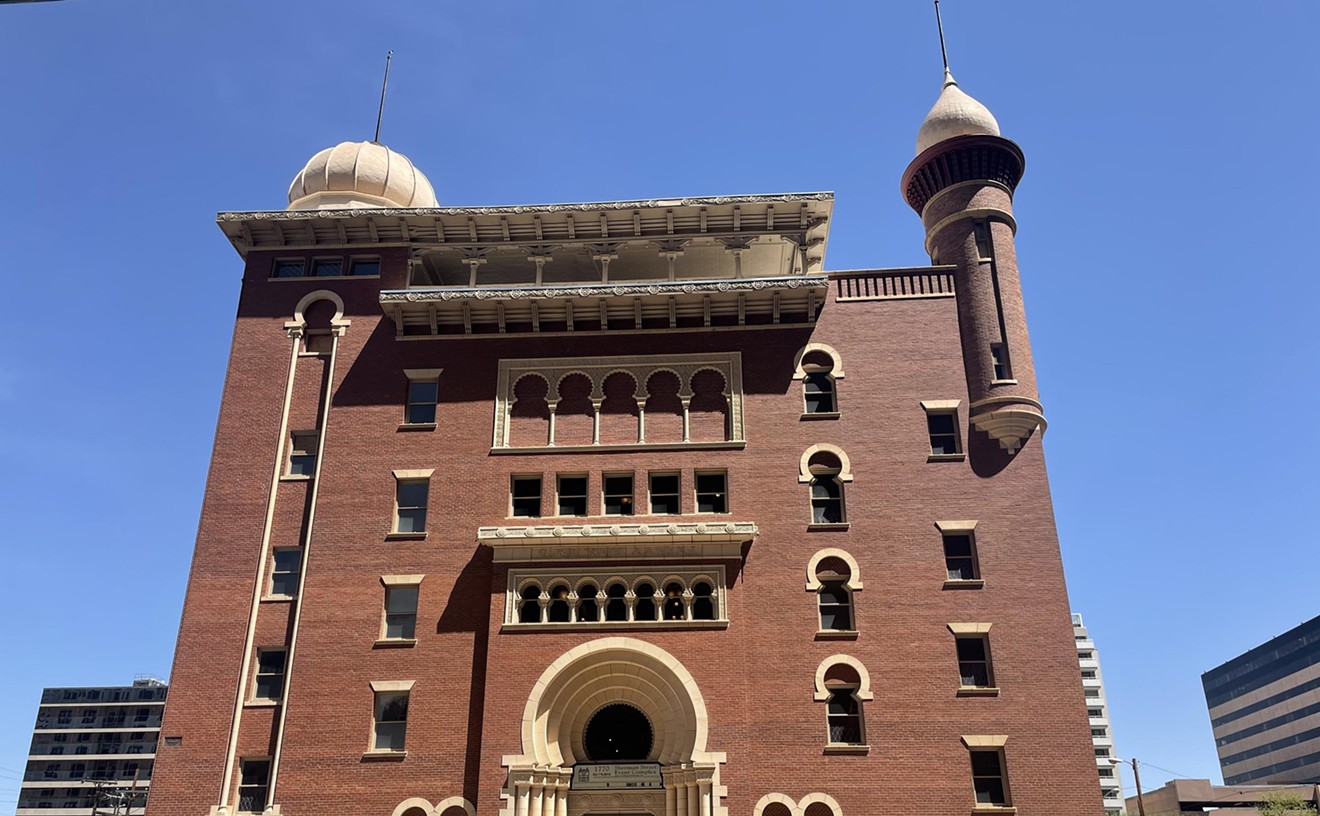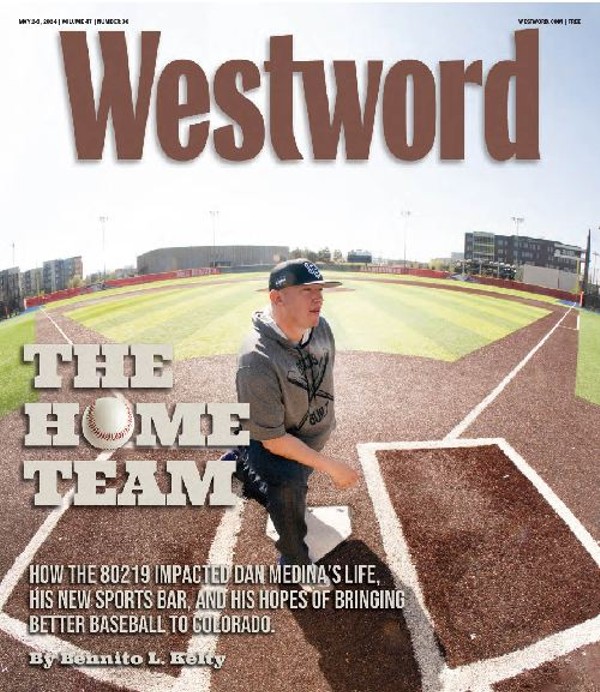Davies Chuck Wagon Diner was established in 1957 by the Lyman Davies family. The architecture is considered to be that of late 19th and early 20th Century American movement.Page down to see more highlights: WASHINGTON HEIGHTS SCHOOL, 6375 W. First Ave.The diner is made of pre-fabricated stainless steel. It was shipped from the manufacturer by railroad. The most distinctive feature of the diner is the 240 square foot sign sporting a 17-foot cowboy. A fiberglass horse was placed on top of the building in the early 1960s. The restaurant was run by the Davies family and was open 24 hours, 7 days a week for a period of 14 years. Originally, truckers driving along Colfax, the only east-west highway through town, were the biggest customers.
Jim and Dwayne Clark, who currently own the diner, desire to preserve as much of the original ambiance as possible. It has been placed on the National Register of Historic Places as a representation of post WWII Americana.
The Washington Heights School was built in 1898 on land given to the school district by Thomas M. Patterson. The architecture is Vernacular Masonry with Colonial Revival elements. Additions were made to the structure in 1911-1912 and 1920.STONE HOUSE, Yale and South Estes Street in Bear Creek Green BeltTeachers in the early days of the school's operation were paid a monthly salary of $30 - $80. There was no principal at the school, so troublemakers were sent to Lakewood Elementary School to be disciplined. The O'Kanes and the O'Briens were pioneer families in the area whose children attended the school.
Washington Heights School operated until 1968, and it has the distinction of being the oldest continuously operating school in Jefferson County. The school is now owned by the City of Lakewood, and it now serves as a center for arts and crafts classes. It has been placed on the Colorado State Register of Historic Properties.
Joseph Hodgson probably built the Stone House sometime between 1859 & 1864.. A letter from Joseph's brother, William, filed with the Colorado Territorial Land Office stated that Joseph settled on the land in 1859, "since which time he has erected thereon a stone house 28 x 28 feet, one story high, shingle roof, plank floor, 10 doors, and 13 windows, and is a comfortable house to live in. " The architecture is Vernacular Folk House. The walls are covered with stones from Bear Creek, meticulously chosen for their color and shape. The house had a number of owners until it was sold to the City of Lakewood in 1973. When the City acquired the property, the house was in very poor condition. It was restored, 1975-1976, and is now used for special events. The Stone House has been placed on the National Register of Historic Places, due to its "uniquely appealing scale and character."HILL SECTION -- GOLDEN HILL CEMETERY, 12000 W. Colfax
The Hill Section of Golden Hill Cemetery is located near the intersection of W. Colfax Ave. and Union St., on a hill that slopes downward from W. Colfax Ave.PANORAMIC PARK, 12655 W. Colfax Ave.The West Side Benevolent Society purchased the Golden Hill Cemetery in 1908. It basically served as a burial ground for the many Jewish tuberculosis patients who came to Colorado for a cure. Most were patients from the Jewish Consumptive Relief Society (JCRS) which was located near Colfax and Pierce Streets. The Hill section was set aside for indigents whose families were unable to afford proper burials.
The entrance to the Hill section is marked by a lynch gate at the eastern end of the cemetery. There were approximately 700 graves identified by metal markers with the names of the deceased written on cards that were inserted into the markers. According to Jewish law, men and women were buried separately.
Over the years, the Hill section was neglected and fell into disrepair compared to the rest of the cemetery, which was well manicured. Recently, there have been efforts to improve the section's appearance. The Hill Section has been placed on the National Register of Historic Places. It represents the efforts of the Jewish community to provide a dignified burial site for its poorer members.
Panoramic Park is owned jointly by the City of Lakewood and the Colorado Department of Transportation. Two monuments, the Blue Star Memorial Highway and the Abbie Dunston Roadside Park, are located in the park. Both monuments were dedicated June 5, 1961, and they were subsequently vandalized. They were replaced and re-dedicated August 8, 1985.ADDENBROOKE FIREPLACE, Southeast entrance of Addenbrooke Park at West Center Ave. & Garrison St.The Blue Star project was the offspring of a New Jersey garden club that desired to honor WWII veterans. The club proposed a network of memorials along the nation's highways that would beautify the landscape with plants and trees. Colorado was the first state to sign up for the project, and Ruby Neal was in charge of the Blue Star memorials throughout Colorado for 25 years.
The Abbie Dunston Roadside Park was named after a gardener who planted and maintained flowers along the roadside. Abbie's husband, Harry, hauled water to the site to sustain the flowers.
Panoramic Park is significant in that it commemorates people who have made historical contributions to the area.
Addenbrooke Park was the home of the same family for more than 100 years. John Everitt came to the Denver area in 1868-69 with his parents. He staked claims to land south of Alameda Ave. between Garrison and Kipling Streets in 1876. He constructed a house of 12' x 14' canvas framework. The roof was made of tins that Chinese merchants used to ship tea.More from our Things to Do archive: "Bike to Work Day photo gallery: Bill Vidal, Michael Hancock, John Hickenlooper... and you!"John Everitt's grandson, Tom, and his mother, Lura Addenbrooke, built the house that contained the fireplace. Tom was a geologist and a gemologist. He built the fireplace with rocks from every state and some from foreign countries. He also used Native American artifacts found on the property. The City of Lakewood bought 105 acres of the property in 1978. They bought 5 additional acres, including the Addenbrooke house, in 1987. The house was torn down in 1997; only the fireplace and a windmill located nearby remain today.











